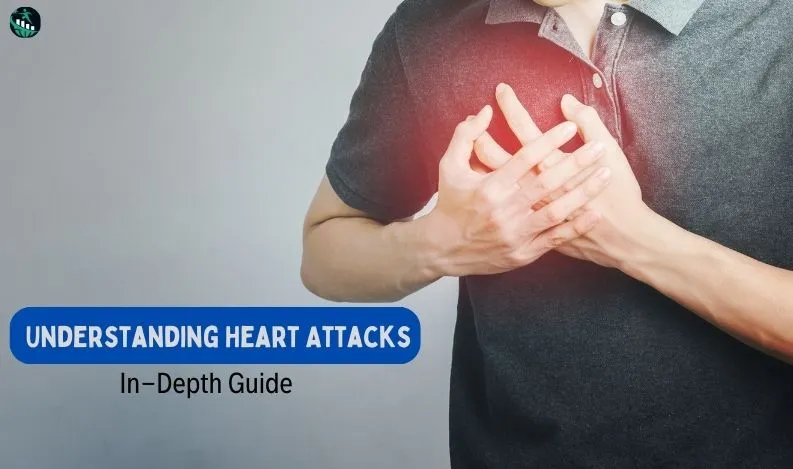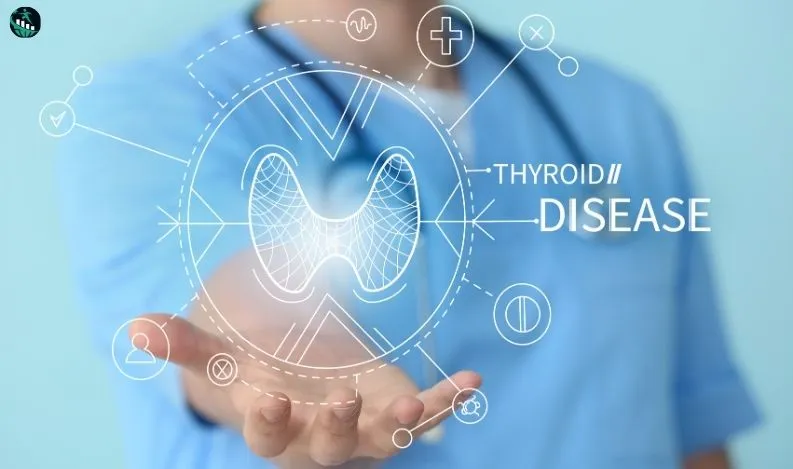
The 10 Most Dangerous Diseases in Today's Society
In today's world, numerous diseases pose significant threats to public health. While medical advancements have improved treatment and prevention, several diseases continue to cause high mortality rates, severe health complications, and extensive socio-economic impacts. This comprehensive guide explores the ten most dangerous diseases in contemporary society, highlighting their causes, symptoms, and the global efforts to combat them.
1. Heart Disease
What is Heart Disease?
Heart disease, also known as cardiovascular disease, encompasses a range of conditions affecting the heart and blood vessels. The most common type is coronary artery disease, which can lead to heart attacks. Other types include heart failure, arrhythmias (irregular heartbeats), and valvular heart diseases. Heart disease is the leading cause of death worldwide, with millions of deaths annually attributed to cardiovascular complications. The disease is often linked to atherosclerosis, a condition where the blood vessels become narrowed or blocked due to the buildup of plaque.
Causes and Risk Factors
• Causes: High blood pressure, high cholesterol, smoking, diabetes, obesity, and physical inactivity.
• Risk Factors: Age, family history, unhealthy diet, and excessive alcohol consumption.
Symptoms
• Chest pain or discomfort
• Shortness of breath
• Fatigue
• Irregular heartbeat
Prevention and Treatment
• Prevention: Healthy diet, regular exercise, maintaining a healthy weight, avoiding smoking, and controlling blood pressure and cholesterol levels.
• Treatment: Medications (e.g., statins, beta-blockers), lifestyle changes, surgical procedures (e.g., angioplasty, bypass surgery), and cardiac rehabilitation.
2. Cancer
What is Cancer?
Cancer is a group of diseases characterized by the uncontrolled growth and spread of abnormal cells. These cells can invade nearby tissues and spread to other parts of the body through the blood and lymph systems (metastasis). Cancer can affect any part of the body and is a leading cause of death globally. There are over 100 different types of cancer, including breast cancer, lung cancer, prostate cancer, and colorectal cancer. Each type of cancer is classified based on the original location and type of cell involved.
Causes and Risk Factors
• Causes: Genetic mutations, exposure to carcinogens (e.g., tobacco smoke, radiation), infections (e.g., HPV, hepatitis), and lifestyle factors.
• Risk Factors: Age, family history, smoking, excessive alcohol consumption, unhealthy diet, and physical inactivity.
Symptoms
• Unexplained weight loss
• Persistent fatigue
• Changes in skin appearance
• Unusual bleeding or discharge
Prevention and Treatment
• Prevention: Avoiding tobacco, maintaining a healthy diet, regular exercise, limiting alcohol intake, and regular screenings.
• Treatment: Surgery, radiation therapy, chemotherapy, immunotherapy, and targeted therapy.
3. Chronic Respiratory Diseases
What are Chronic Respiratory Diseases?
Chronic respiratory diseases include chronic obstructive pulmonary disease (COPD), asthma, and lung diseases such as bronchitis and emphysema. COPD is characterized by long-term breathing problems and poor airflow, primarily caused by smoking and air pollution. Asthma is a condition where the airways become inflamed and narrow, leading to difficulty breathing. These diseases cause long-term breathing difficulties and significantly impact the quality of life of those affected.
Causes and Risk Factors
• Causes: Smoking, air pollution, occupational hazards, and genetic factors.
• Risk Factors: Smoking, exposure to pollutants, respiratory infections, and family history.
Symptoms
• Chronic cough
• Shortness of breath
• Wheezing
• Frequent respiratory infections
Prevention and Treatment
• Prevention: Avoiding smoking, reducing exposure to pollutants, using protective equipment in hazardous environments, and regular vaccinations.
• Treatment: Medications (e.g., bronchodilators, steroids), pulmonary rehabilitation, oxygen therapy, and lifestyle changes.
4. Diabetes
What is Diabetes?
Diabetes is a chronic condition characterized by high blood sugar levels due to the body's inability to produce or use insulin effectively. There are three main types of diabetes: Type 1, Type 2, and gestational diabetes. Type 1 diabetes is an autoimmune condition where the immune system attacks insulin-producing cells in the pancreas. Type 2 diabetes, the most common form, is primarily due to insulin resistance and is often linked to obesity and lifestyle factors. Gestational diabetes occurs during pregnancy and increases the risk of developing Type 2 diabetes later in life.
Causes and Risk Factors
• Causes: Genetic predisposition, autoimmune destruction of insulin-producing cells, and lifestyle factors.
• Risk Factors: Obesity, physical inactivity, unhealthy diet, family history, and age.
Symptoms
• Increased thirst and urination
• Extreme fatigue
• Blurred vision
• Slow-healing wounds
Prevention and Treatment
• Prevention: Healthy diet, regular physical activity, maintaining a healthy weight, and regular screenings.
• Treatment: Insulin therapy, oral medications, blood sugar monitoring, and lifestyle modifications.
5. Alzheimer's Disease and Dementia
What is Alzheimer's Disease and Dementia?
Alzheimer's disease is a progressive neurodegenerative disorder that causes memory loss, cognitive decline, and behavioral changes. It is the most common cause of dementia, which is an umbrella term for disorders affecting cognitive functions, including memory, thinking, and social abilities. Alzheimer's disease is characterized by the buildup of amyloid plaques and tau tangles in the brain, leading to the death of brain cells. The disease progresses through several stages, from mild memory loss to severe cognitive and functional impairment.
Causes and Risk Factors
• Causes: Genetic factors, brain cell damage, and the buildup of abnormal proteins in the brain.
• Risk Factors: Age, family history, cardiovascular disease, head injury, and lifestyle factors.
Symptoms
• Memory loss
• Confusion and disorientation
• Difficulty in communication
• Changes in mood and behavior
Prevention and Treatment
• Prevention: Healthy diet, regular exercise, mental stimulation, social engagement, and managing cardiovascular risk factors.
• Treatment: Medications (e.g., cholinesterase inhibitors, memantine), cognitive therapies, and supportive care.
6. Stroke
What is a Stroke?
A stroke occurs when the blood supply to part of the brain is interrupted or reduced, depriving brain tissue of oxygen and nutrients. This can cause brain cells to die within minutes, leading to severe disabilities or death. Strokes are classified into two main types: ischemic stroke, caused by a blockage in an artery, and hemorrhagic stroke, caused by a burst blood vessel in the brain. A transient ischemic attack (TIA), or mini-stroke, is a temporary period of symptoms similar to those of a stroke but does not cause permanent damage.
Causes and Risk Factors
• Causes: Blocked or burst blood vessels in the brain (ischemic stroke or hemorrhagic stroke).
• Risk Factors: High blood pressure, smoking, diabetes, high cholesterol, obesity, and heart disease.
Symptoms
• Sudden numbness or weakness in the face, arm, or leg
• Confusion and trouble speaking
• Difficulty seeing in one or both eyes
• Severe headache
Prevention and Treatment
• Prevention: Controlling blood pressure, quitting smoking, maintaining a healthy diet, regular exercise, and managing chronic conditions.
• Treatment: Emergency medical care, clot-busting medications, surgical interventions, rehabilitation therapies, and lifestyle changes.
7. HIV/AIDS
What is HIV/AIDS?
HIV (human immunodeficiency virus) attacks the body's immune system, making it difficult to fight infections and diseases. If untreated, HIV can lead to AIDS (acquired immunodeficiency syndrome), the final and most severe stage of the infection. HIV is transmitted through contact with infected bodily fluids, including blood, semen, vaginal fluids, and breast milk. Once infected, the virus attacks and destroys CD4 cells (a type of white blood cell), weakening the immune system and increasing the risk of opportunistic infections and certain cancers.
Causes and Risk Factors
• Causes: Transmission through bodily fluids (e.g., blood, semen, vaginal fluids), unprotected sex, sharing needles, and mother-to-child transmission.
• Risk Factors: Unprotected sex, multiple sexual partners, sharing needles, and having other sexually transmitted infections (STIs).
Symptoms
• Flu-like symptoms during the acute infection phase
• Persistent swollen lymph nodes
• Rapid weight loss
• Recurrent infections
Prevention and Treatment
• Prevention: Safe sex practices, regular HIV testing, pre-exposure prophylaxis (PrEP), and needle exchange programs.
• Treatment: Antiretroviral therapy (ART) to control the virus and prevent progression to AIDS, along with regular medical care and lifestyle changes.
8. Tuberculosis (TB)
What is Tuberculosis?
Tuberculosis is a bacterial infection caused by Mycobacterium tuberculosis, primarily affecting the lungs but can spread to other organs. It is one of the top causes of death from infectious diseases worldwide. TB spreads through the air when people with active TB in their lungs cough, sneeze, or spit. Not everyone infected with TB bacteria becomes sick; those who do not become sick have latent TB infection (LTBI) and are not contagious. However, they can develop TB disease if they do not receive proper treatment.
Causes and Risk Factors
• Causes: .Airborne transmission from an infected person through coughing or sneezing.
• Risk Factors: Close contact with TB patients, weakened immune system, HIV infection, and living or working in crowded conditions.
Symptoms
• Persistent cough with blood-tinged sputum
• Chest pain
• Weight loss and fatigue
• Night sweats and fever
Prevention and Treatment
• Prevention: Vaccination with Bacillus Calmette-Guérin (BCG), early detection and treatment, and infection control measures.
• Treatment: Prolonged course of antibiotics (e.g., isoniazid, rifampicin), directly observed therapy (DOT), and supportive care.
9. Malaria
What is Malaria?
Malaria is a life-threatening disease caused by Plasmodium parasites, transmitted through the bites of infected female Anopheles mosquitoes. It remains a major public health issue in tropical and subtropical regions. The most common species causing malaria in humans are Plasmodium falciparum and Plasmodium vivax. Plasmodium falciparum is the most severe and can cause life-threatening complications. Malaria causes recurrent attacks of fever and chills and, if left untreated, can lead to severe complications and death.
Causes and Risk Factors
• Causes: Infection with Plasmodium parasites (Plasmodium falciparum, Plasmodium vivax, Plasmodium malariae, and Plasmodium ovale).
• Risk Factors: Living in or traveling to malaria-endemic areas, lack of access to prevention measures, and poor immune response.
Symptoms
• High fever and chills
• Sweating
• Headache and muscle pain
• Nausea and vomiting
Prevention and Treatment
• Prevention: Insecticide-treated nets (ITNs), indoor residual spraying (IRS), use of repellents, and prophylactic antimalarial drugs.
• Treatment: Artemisinin-based combination therapies (ACTs), supportive care, and management of complications.
10. Influenza
What is Influenza?
Influenza, commonly known as the flu, is a viral infection that attacks the respiratory system. It can cause mild to severe illness and lead to serious complications, especially in vulnerable populations such as young children, elderly individuals, and those with chronic health conditions. Influenza viruses are categorized into three main types: A, B, and C, with types A and B causing the most significant disease in humans. The virus spreads through respiratory droplets when an infected person coughs, sneezes, or talks.
Causes and Risk Factors
• Causes: Infection with influenza viruses (types A, B, and C).
• Risk Factors: Young children, elderly individuals, pregnant women, and people with chronic health conditions.
Symptoms
• Fever and chills
• Cough and sore throat
• Runny or stuffy nose
• Body aches and fatigue
Prevention and Treatment
• Prevention: Annual flu vaccination, good hygiene practices, avoiding close contact with infected individuals, and antiviral medications for high-risk groups.
• Treatment: Antiviral drugs (e.g., oseltamivir, zanamivir), rest, hydration, and over-the-counter medications to relieve symptoms.
Conclusion
The diseases highlighted in this guide represent some of the most significant health threats in today's society. By understanding their causes, symptoms, and prevention strategies, we can work towards reducing their impact and improving global health outcomes. Public health initiatives, medical research, and individual efforts to maintain healthy lifestyles are essential in combating these dangerous diseases and promoting a healthier world.
Also Read:-







Recent Comments: